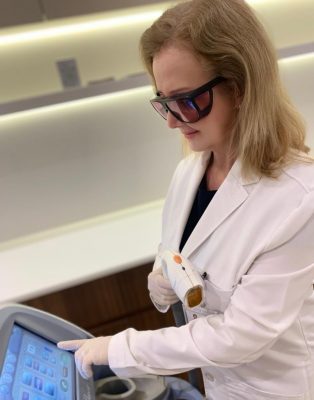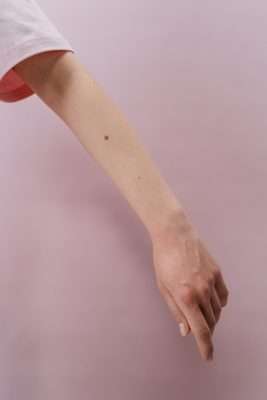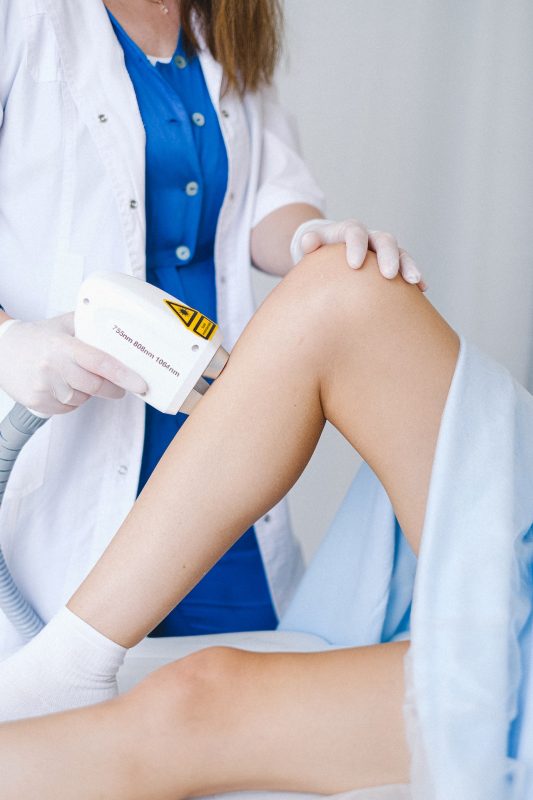Laser hair removal and skin treatments – your essential guide
Lasers have been used in the medical and cosmetics professions for many years.
The machines and treatments available have improved considerably over that time.
Lasers are now used routinely in hospitals and clinics for surgery and cosmetic procedures.
Laser hair removal in Dubai is a very common and safe practice.
In the UAE laser use is strictly regulated to ensure laser practitioners and doctors have been adequately trained, are experienced and competent in the use of lasers.
Laser hair removal Dubai
What are the types of cosmetic laser treatments available?
Hair removal
Skin rejuvenation (skin resurfacing procedure that improves the appearance of the skin, sun damaged skin, scars caused by acne, chickenpox or injuries or treat minor facial flaws)
Anti Aging (This treatment can decrease the appearance of fine lines and wrinkles around the eyes, mouth and cheeks)
Skin de-pigmentation and age spot removal – removes dark spots.
Tattoo removal.
Very similar treatments available but not strictly speaking lasers include:
Electrolysis
IPL (Intense Pulsed Light)
How do lasers and IPL work?
Lasers emit single wavelength concentrated light that can be very precisely targeted. They produce controlled heat energy which can be very effective at removing hair and treating skin issues on the surface or deeper down.
Lasers are more precise than IPL and can reduce side effects and shorten recovery times.
IPL machines produce broad spectrum light which can also be very effective but are not so targeted and focused.
Both lasers and IPL can be very effective when delivered by a qualified and experienced laser practitioner.

Ablative versus non-ablative?
Ablative lasers remove the top layer of the skin, which may contain damaged or unwanted symptoms. An ablative procedure is a more aggressive treatment for the rejuvenation of the skin but one which can provide more substantial results that can last for a longer period of time. Patients who have an ablative laser treatment often require only one session to get their desired results.
Non-ablative class of lasers heat the underlying layers of the skin to induce the healing response leading to better-looking skin. Non-ablative treatment may require three or more sessions to obtain their desired level of rejuvenation.
Which procedure you should have will depend on your skin condition, your goals and the recommendation of your practitioner.
What are the most common types of Laser available?
755 nm Alexandrite
Most appropriate for lighter skin types for hair removal with a very high absorption of melanin
805 nm or 810 nm Diode
Has a medium absorption of melanin and safe for most skin types. This laser wavelength has a slightly lower absorption of melanin compared to a 755 nm Alexandrite which makes it safer on darker skin tones. When treating individuals with darker skin types, a greater number of treatments are usually required due to lower energy treatments to maintain a safe treatment.
1064 nm Nd:Yag
Can be used safely on all skin types. It is highly effective on dark or tanned skin with darker hair, but is of limited use on light or fine hair.
Fast repetition rates and large coverage areas allow large areas of the body to be treated quickly.
Nd: YAG technology can be used to eliminate unwanted hair on almost any part of the body.
Q switch laser
Unlike common lasers that consist of a continuous laser beam, Q-switched lasers create laser beam pulses that last only billionths of a second. Because the energy from the laser is emitted in such a brief period of time, the energy is concentrated into very powerful pulses.
Q-Switch Laser is an effective skin rejuvenation treatment for reducing redness, hyperpigmentation and pore size. This treatment can also boost skin regeneration, improve the appearance of acne scarring and create a reduction in fine lines and wrinkles.
Used for tattoo removal and operates in a shorter resting time than a long pulsed laser used for hair removal.
CO2 laser
Skin surface-removing laser emitted by carbon dioxide (ablative laser) to remove scars, warts and deep wrinkles.
What is the best type of machine for laser hair removal in Dubai?
This depends on the colour or shade of your skin.
Your skin type is identified using the The Fitzpatrick Skin Scale system. This system classifies skin type according to the amount of pigment and its reaction to light exposure.
In your pre-consultation with your laser practitioner your skin type will be identified to determine the most suitable types of machine that can be used on your skin.
LightSheer Duet is a very safe, fast and effective Laser Hair Removal machine for most skin tones and is considered by many doctors and practitioners as the best laser available.
Utilizing the newest technology, its functional wavelength of 810 nm is considered the ideal level for long lasting hair removal.
The device features two different handpieces to optimize treatment success.
The LightSheer enables us to treat backs and legs comfortably in only 15 minutes without pain, anesthetics or gels.
Candela and Cynosure are two of the leading, most trusted suppliers of laser technology in the laser hair business.
These technologies combine both an alexandrite laser which is great for treating lighter skin types and Nd:YAG perfect for treating darker skin.
How does laser hair removal in Dubai work?
Laser light energy is absorbed by melanin and converted into heat which destroys the hair follicle.
Hair actually has a 4 stage growth cycle and laser treatment is most effective at the anlagen stage when the hair follicle cells are growing rapidly.
Therefore the patient will need to come in every few weeks to destroy hair which has returned to the anlagen or growth cycle.
Laser hair removal therefore usually requires a course of treatment.
In between treatments patients can shave which encourages the damaged follicle to shed or drop out.
It is important to refrain from having the area exposed to any sunlight, and as part of your daily routine, to keep the area protected with a SPF 50 or over.
What is IPL hair removal?
IPL is a more permanent hair solution that provides long-lasting results.
It utilizes safe, modern technology, so you can experience effective results without worrying about any adverse side effects.
Once you undergo an IPL treatment, you should know that your hair won’t be gone immediately afterward. While this treatment does destroy the hair follicle, the hair shaft still needs to shed. This process typically takes about two weeks.
There is very little risk of damaging your skin from IPL treatments, also known as photofacials. A photofacial is a non-invasive treatment that saturates the surface of your skin with light to target problem areas and reverse both signs of damage and aging.
With your first and subsequent IPL treatments, improvement is most noticeable starting about a week after each session. You’ll see the greatest results after 3 to 6 months if you do a series of IPL treatments spaced out about a month apart for each session.
By treating a deeper layer of the skin, IPL stimulates collagen growth and helps improve the skin’s texture, reducing the appearance of fine lines and wrinkles.
In the process of heating up your skin, IPL encourages the production of more collagen. It stimulates the natural process by which your body repairs all kinds of damage. Once produced, the collagen goes to work on improving the effects of sun damage and the other factors that make your skin look more aged.
Who can receive IPL and laser treatments?
Both treatments are generally suitable for male and females over the age of 18 years.
Medical conditions should be discussed during your consultation and contraindications highlighted.
It is important to shave before your laser hair removal appointment. Shaving 24 hours before is recommended. Shaving on the day of your session can be dangerous and should be avoided. This is because when you shave the razor may lift a layer of skin off as it passes over your skin.
What is Forever Young BBL?
This is a popular Broad Band Light treatment that uses broad spectrum light combined with filters to target specific skin properties. It is especially suitable for helping with rosacea.
There is exciting new research that shows that repetitive treatment using the Forever Young BBL positively influences aging cellular DNA.
Studies have shown that DNA ages as we get older.
New research that visually compares young DNA to older DNA shows that repetitive treatment of the skin of older patients using the Forever Young BBL causes the older DNA to revert to a more youthful form.
Examined patients had more healthy, thicker and flawless skin. Patients will require a BBL package and treatment 3 to 4 times per year.
Most patients can expect at least a 50% improvement with each treatment. Severe sun damage may therefore require multiple treatments. Since there is no recuperation time, patients return to work and normal activities the same day. The dark spots flake off over the next 7-10 days.
How does Laser skin rejuvenation work? (Also known as skin resurfacing, anti-aging or de-pigmentation)
These procedures vary from very light minor non-ablative surface treatments to using an ablative laser to remove layers of skin. The new skin cells that form during healing give the skin a tighter, younger looking surface.
Laser skin resurfacing is a proven way to help reduce wrinkles, age spots, acne scars, and other blemishes as well as tighten skin and balance tone.
The actual type of laser and method of use will depend on the skin condition presented.
How does laser tattoo removal work?
Lasers help to remove tattoos by breaking up the pigment colours. Tattoo colours determine which type of laser should be used.
Using a laser to remove tattoos can significantly diminish the appearance of your tattoo and will give minimal side effects.
Laser hair removal and skin treatment in Dubai – Summary
Lasers have certainly revolutionised skin treatment and can be very effective at treating skin conditions.
It cannot be over emphasised the importance of discussing your specific concerns with your practitioner. He or she will take into consideration your skin type and other factors to advise you on the best course of action.
A pre-treatment patch test is highly recommended.
It is very important to choose a practitioner who is qualified, licensed and experienced at administering laser treatments.
There can be side effects to laser treatments. Discuss these in detail with your practitioner prior to commencing any treatment.
A good practitioner will be happy to discuss at length the pros and cons of all treatments offered in order to manage client expectations and ensure no unexpected outcomes.
It is also very important to closely follow your practitioners pre and after-care instructions. These may be to avoid sunlight, apply sunscreen, avoid certain cosmetics etc.
Following these guidelines, the patient has the best prospect of achieving fantastic, long lasting results.

Perfect Results = Perfect Skin
Fio de Ouro B5 Intensive Moisturizer 250ml
Fio de Ouro Professional Skin Care Gift Set
Do you know what beauty is?

